Showing Spotlights 1465 - 1472 of 2783 in category All (newest first):
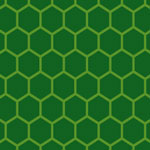 Graphene is undoubtedly emerging as the most promising nanomaterial because of its unique combination of superb properties, which opens a way for its exploitation in a wide spectrum of applications. However, it has to overcome a number of obstacles before we can realize its full potential for practical applications. One of the greatest challenges being faced today in commercializing graphene is how to produce high quality material, on a large scale at low cost, and in a reproducible manner. The major hurdle in manufacturing graphene on an industrial scale is the process complexity and the associated high cost of its production, which results in expensive product. In the present article, an attempt has been made to carry out an extensive survey and analysis of global patents pertaining to the various processes of graphene synthesis.
Graphene is undoubtedly emerging as the most promising nanomaterial because of its unique combination of superb properties, which opens a way for its exploitation in a wide spectrum of applications. However, it has to overcome a number of obstacles before we can realize its full potential for practical applications. One of the greatest challenges being faced today in commercializing graphene is how to produce high quality material, on a large scale at low cost, and in a reproducible manner. The major hurdle in manufacturing graphene on an industrial scale is the process complexity and the associated high cost of its production, which results in expensive product. In the present article, an attempt has been made to carry out an extensive survey and analysis of global patents pertaining to the various processes of graphene synthesis.
Jun 28th, 2012
 Many nanotechnology projects require some form of nanopatterning technique for fabricating the devices, structures and surfaces required in fields ranging from electronics to photonics, security, biotechnology and medicine. Although they may not be visible to the naked eye, the nanometer-sized trenches, ridges, curves and grooves of these patterns and surfaces have a very visible impact. Researchers have developed a wide range of nanopatterning techniques, from top-down methods such as nanoimprint, e-beam or UV lithography to bottom-up techniques such as transfer nanolithography or nanopositioning on DNA or protein scaffolds. A novel technique uses a biofunctionalization approach based on resist-less electron-beam-induced deposition of carbon-containing nanofeatures, that has been developed into a universal biofunctionalization platform. This unique ability can be exploited for biological experiments, where cells respond to the nanoscale density of activating molecules such as antibodies.
Many nanotechnology projects require some form of nanopatterning technique for fabricating the devices, structures and surfaces required in fields ranging from electronics to photonics, security, biotechnology and medicine. Although they may not be visible to the naked eye, the nanometer-sized trenches, ridges, curves and grooves of these patterns and surfaces have a very visible impact. Researchers have developed a wide range of nanopatterning techniques, from top-down methods such as nanoimprint, e-beam or UV lithography to bottom-up techniques such as transfer nanolithography or nanopositioning on DNA or protein scaffolds. A novel technique uses a biofunctionalization approach based on resist-less electron-beam-induced deposition of carbon-containing nanofeatures, that has been developed into a universal biofunctionalization platform. This unique ability can be exploited for biological experiments, where cells respond to the nanoscale density of activating molecules such as antibodies.
Jun 26th, 2012
 The future of electronics will be flexible. Not only will you be able to roll up your iPads and smart phones like a piece of paper, electronic devices will be invisibly embedded in the textiles you wear from baby diapers to doctors' surgical gloves. To realize such devices, equally flexible power sources need to be integrated with the electronic devices. Textile yarns are an obvious choice. Researchers are already pushing ahead with electronic textiles (e-textiles), for instance by coating regular cotton yarns with single-walled and multi-walled carbon nanotubes and polyelectrolytes, thus making cotton fibers conductive. Addressing the power source issue, researchers have now found a simple way to provide cotton with a new function - storing energy.
The future of electronics will be flexible. Not only will you be able to roll up your iPads and smart phones like a piece of paper, electronic devices will be invisibly embedded in the textiles you wear from baby diapers to doctors' surgical gloves. To realize such devices, equally flexible power sources need to be integrated with the electronic devices. Textile yarns are an obvious choice. Researchers are already pushing ahead with electronic textiles (e-textiles), for instance by coating regular cotton yarns with single-walled and multi-walled carbon nanotubes and polyelectrolytes, thus making cotton fibers conductive. Addressing the power source issue, researchers have now found a simple way to provide cotton with a new function - storing energy.
Jun 25th, 2012
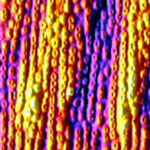 Quantum rings show unique electronic, magnetic and optical properties. These unique properties make them attractive for various applications such as magnetic memory and systems for future quantum computers. To be used in practical applications, however,the quantum rings need to be fabricated in a controlled fashion. So far, the fabrication of laterally ordered quantum rings has not been reported. Now, though, researchers have demonstrated a fabrication method to obtain large scale ordered quantum rings. The quantum rings can be simply created by partially capping quantum dots. The key to fabricating ordered quantum rings is to create ordered quantum dots.
Quantum rings show unique electronic, magnetic and optical properties. These unique properties make them attractive for various applications such as magnetic memory and systems for future quantum computers. To be used in practical applications, however,the quantum rings need to be fabricated in a controlled fashion. So far, the fabrication of laterally ordered quantum rings has not been reported. Now, though, researchers have demonstrated a fabrication method to obtain large scale ordered quantum rings. The quantum rings can be simply created by partially capping quantum dots. The key to fabricating ordered quantum rings is to create ordered quantum dots.
Jun 21st, 2012
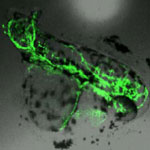 A researcher team at the California NanoSystems Institute and the University of California, Los Angeles, have found that the crystal structure of silver nanoparticles is an important determinant of their toxicity to aquatic life. The study comes amid growing concern that the proliferation of nanotechnology will result in the inadvertent release of nanomaterials into the environment. Release of silver nanoparticles is a particular concern given that over 30% of the roughly 800 nano-enabled products currently on the market contain silver nanoparticles. Prior to this study, the environmental toxicity of silver nanoparticles was thought to result mainly from release of silver ions. Nel and his team have now found that defects on the surface of silver nanoparticles can catalyze the production of reactive oxygen species that damage biomolecules within cells. This new mechanism of toxicity may be applicable to non-aquatic organisms, and extend beyond silver nanoparticles.
A researcher team at the California NanoSystems Institute and the University of California, Los Angeles, have found that the crystal structure of silver nanoparticles is an important determinant of their toxicity to aquatic life. The study comes amid growing concern that the proliferation of nanotechnology will result in the inadvertent release of nanomaterials into the environment. Release of silver nanoparticles is a particular concern given that over 30% of the roughly 800 nano-enabled products currently on the market contain silver nanoparticles. Prior to this study, the environmental toxicity of silver nanoparticles was thought to result mainly from release of silver ions. Nel and his team have now found that defects on the surface of silver nanoparticles can catalyze the production of reactive oxygen species that damage biomolecules within cells. This new mechanism of toxicity may be applicable to non-aquatic organisms, and extend beyond silver nanoparticles.
Jun 20th, 2012
 The Action Plan, presented by the EU Commission in 2004, envisioned integrating "the social dimension into a responsible technology development" and strengthening efforts related to "health, safety, environmental aspects and consumer protection". This encompassed (1) the systematic study of safety-relevant aspects at the earliest possible date, (2) integrating health- and environment-relevant aspect in research and development, (3) conducting targeted studies on toxicology and ecotoxicology and, finally, (4) adapting risk assessment approaches to nano-specific aspects in all phases of product life-cycles. The primary goal was to improve the competitiveness of European industry. The draft presented in mid-2011 for the planned research priorities2 continues this strategic focus. This article describes a selection of 22 current projects dealing with safety research as related to nanotechnology.
The Action Plan, presented by the EU Commission in 2004, envisioned integrating "the social dimension into a responsible technology development" and strengthening efforts related to "health, safety, environmental aspects and consumer protection". This encompassed (1) the systematic study of safety-relevant aspects at the earliest possible date, (2) integrating health- and environment-relevant aspect in research and development, (3) conducting targeted studies on toxicology and ecotoxicology and, finally, (4) adapting risk assessment approaches to nano-specific aspects in all phases of product life-cycles. The primary goal was to improve the competitiveness of European industry. The draft presented in mid-2011 for the planned research priorities2 continues this strategic focus. This article describes a selection of 22 current projects dealing with safety research as related to nanotechnology.
Jun 18th, 2012
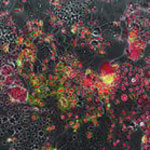 Researchers in Israel have found a unique way to affect cancer cells in a rather controllable manner. For example, they can kill these cells in various ways, or they can make them fuse together, as they like. They do so by using functionalized, 20 nm in diameter gold nanospheres and specific, intense laser pulses with a visible wavelength tuned to the plasmonic resonance of those particles. This technique may have an impact on various technologies which require sophisticated cell manipulation for therapeutic and drug development applications. What is unique about this technique is that it is highly controllable and repeatable. The structural stability of the nanospheres even after the strongest laser illumination allows them to deliver the effect over and over again, until the desired result is obtained.
Researchers in Israel have found a unique way to affect cancer cells in a rather controllable manner. For example, they can kill these cells in various ways, or they can make them fuse together, as they like. They do so by using functionalized, 20 nm in diameter gold nanospheres and specific, intense laser pulses with a visible wavelength tuned to the plasmonic resonance of those particles. This technique may have an impact on various technologies which require sophisticated cell manipulation for therapeutic and drug development applications. What is unique about this technique is that it is highly controllable and repeatable. The structural stability of the nanospheres even after the strongest laser illumination allows them to deliver the effect over and over again, until the desired result is obtained.
Jun 15th, 2012
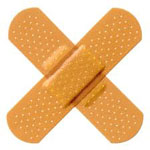 Burn injuries are one of the major global health problems. Every year 195,000 people from all over the world die because of fire alone. A burn injury may damage some or all skin layers and is caused by a hot solid, a hot liquid, or a flame. However, injuries related to electricity, radioactivity, ultraviolet radiation, chemicals and respiratory damage due to smoking are also considered as burn injuries. Besides cleaning the wound and applying various topical anti-microbial agents, wound dressings could be an effective solution in preventing microbial infections for burn care. The suitability of a burn wound dressing depends on a burn type. Conventional dressings are not efficient enough to induce haemostasis, adherence and in holding a moist environment around wound. Due to the advances in the field of nanotechnology, it is now possible to design nanofiber-based wound dressings where an electrospun-nanofibrous layer is applied to a basic support fabric material.
Burn injuries are one of the major global health problems. Every year 195,000 people from all over the world die because of fire alone. A burn injury may damage some or all skin layers and is caused by a hot solid, a hot liquid, or a flame. However, injuries related to electricity, radioactivity, ultraviolet radiation, chemicals and respiratory damage due to smoking are also considered as burn injuries. Besides cleaning the wound and applying various topical anti-microbial agents, wound dressings could be an effective solution in preventing microbial infections for burn care. The suitability of a burn wound dressing depends on a burn type. Conventional dressings are not efficient enough to induce haemostasis, adherence and in holding a moist environment around wound. Due to the advances in the field of nanotechnology, it is now possible to design nanofiber-based wound dressings where an electrospun-nanofibrous layer is applied to a basic support fabric material.
Jun 13th, 2012
 Graphene is undoubtedly emerging as the most promising nanomaterial because of its unique combination of superb properties, which opens a way for its exploitation in a wide spectrum of applications. However, it has to overcome a number of obstacles before we can realize its full potential for practical applications. One of the greatest challenges being faced today in commercializing graphene is how to produce high quality material, on a large scale at low cost, and in a reproducible manner. The major hurdle in manufacturing graphene on an industrial scale is the process complexity and the associated high cost of its production, which results in expensive product. In the present article, an attempt has been made to carry out an extensive survey and analysis of global patents pertaining to the various processes of graphene synthesis.
Graphene is undoubtedly emerging as the most promising nanomaterial because of its unique combination of superb properties, which opens a way for its exploitation in a wide spectrum of applications. However, it has to overcome a number of obstacles before we can realize its full potential for practical applications. One of the greatest challenges being faced today in commercializing graphene is how to produce high quality material, on a large scale at low cost, and in a reproducible manner. The major hurdle in manufacturing graphene on an industrial scale is the process complexity and the associated high cost of its production, which results in expensive product. In the present article, an attempt has been made to carry out an extensive survey and analysis of global patents pertaining to the various processes of graphene synthesis.
 Subscribe to our Nanotechnology Spotlight feed
Subscribe to our Nanotechnology Spotlight feed





